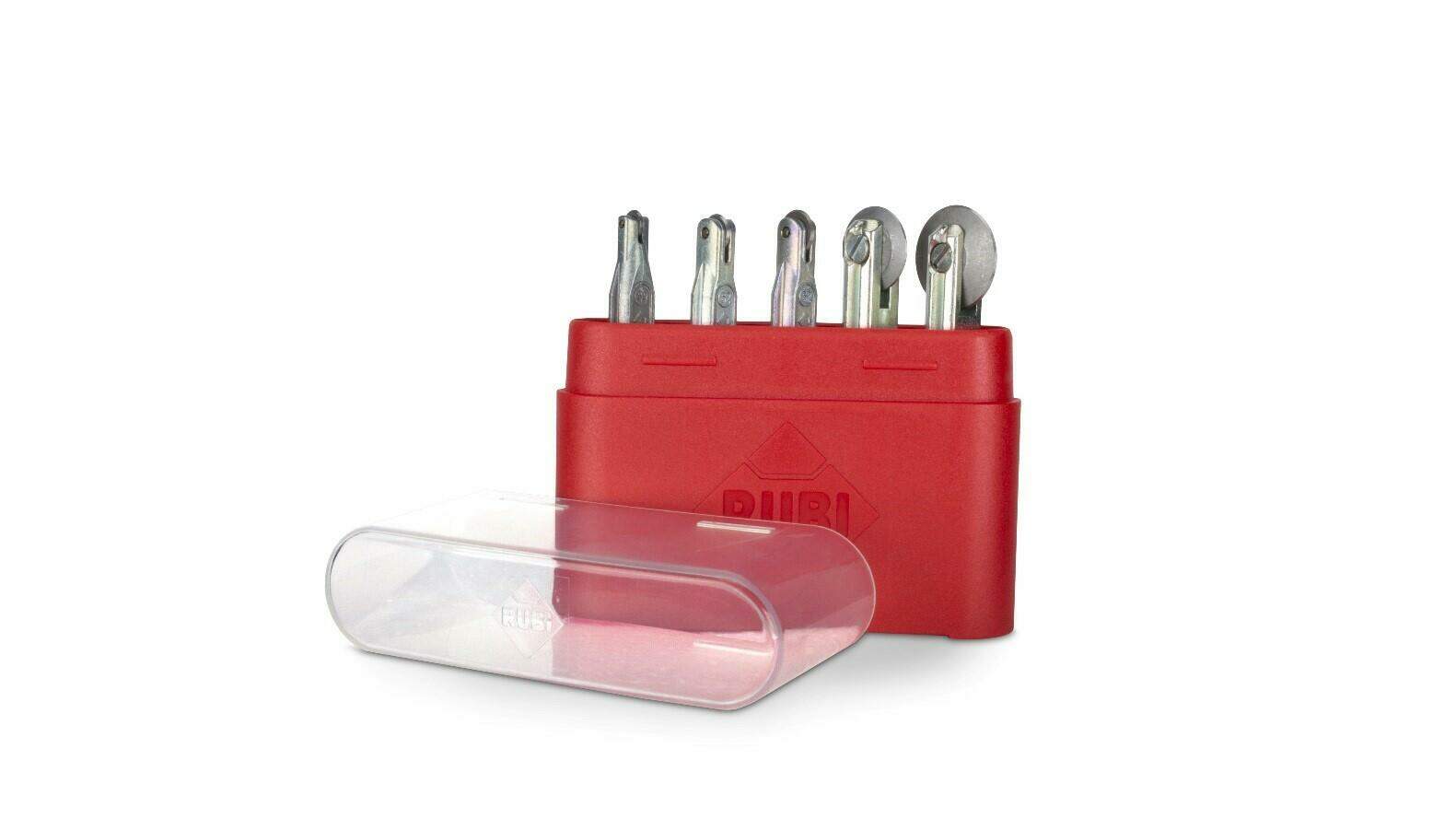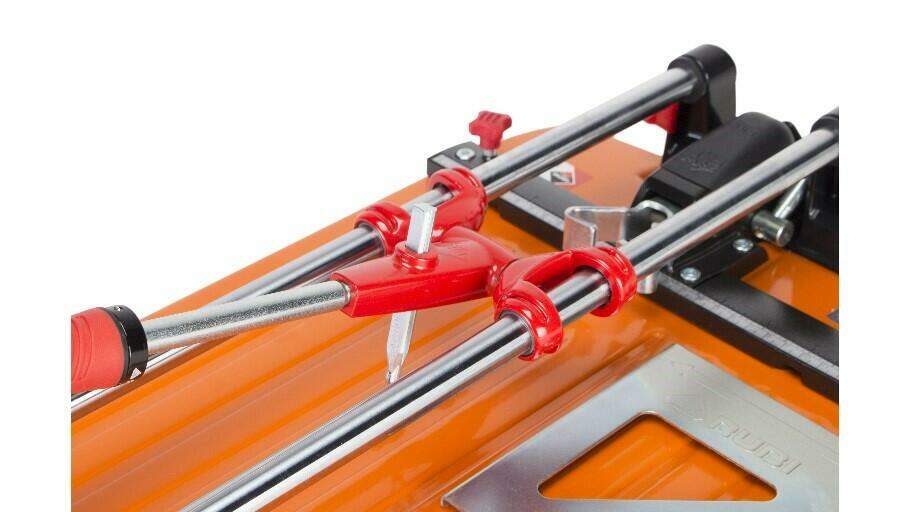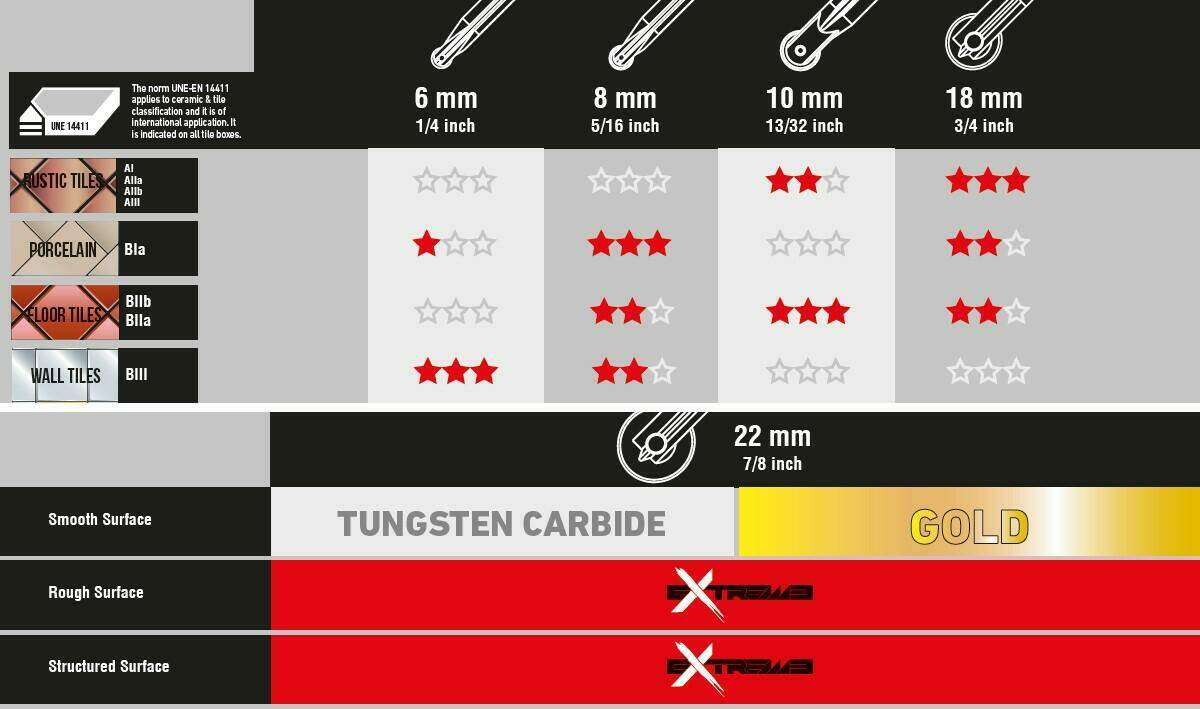For this reason, today's post will focus on detailing some important aspects that every user should know about scoring wheels.
At RUBI, the concept of scoring wheel describes the set formed by 3 elements: Handle, shaft and wheel.
Of course, of the 3, the most important of all is the rulina.

RUBI manufactures all its rolling pins from tungsten carbide. The main characteristic of this hard metal alloy is its high resistance to friction wear.
The function of the scoring wheels is to scratch the ceramic tile and weaken it superficially, allowing the tile to break where we want it to when applying a specific force.
At RUBI, we are very clear about the importance of the scoring wheel in the daily work of a professional ceramic tile installer. That's why today we're sharing some tips and tricks to help you get the most out of them.
THE IMPORTANCE OF A CLEAN SCORING WHEEL
Although it may not seem like it, cleaning your wheels is essential to getting the most out of them.
During daily use, particles of enamel coating the ceramic adhere to the surface of the wheel and shaft, reducing their performance and directly affecting the cutting performance.
Cleaning/lubrication is important, but the real secret is removing any excess oil/lubricant with a cotton cloth.
For cleaning to be effective, our scoring wheel (especially the wheel and shaft) must be completely dry and free of any oil residue. Otherwise, we'll increase the adhesion of particles generated during scoring.
A good trick that I personally do with my scoring wheels is to place them in a glass with a little oil (just enough to cover the wheel and the shaft) and leave them to “soak” overnight.
In the morning, I just have to dry them and they're like fresh out of the blister pack.
THE WHEEL SCRATCHES, IT DOESN'T BREAK
Scoring wheels are designed to score, not to separate the material. That's the purpose of the separator.
Therefore, it's important to pay close attention to the position of the scoring wheel before separating our ceramic tile. The great advantage of being able to adjust the position of RUBI scoring wheels is that it improves working ergonomics, depending on the thickness and length of the tile. However, precisely because of this possibility, we must ensure that the scoring wheel doesn't touch the ceramic tile when separating it.

“EVERY SHEEP WITH ITS MATE”
Allow me to use this classic Spanish saying to refer to the importance of using the correct diameter of the scoring wheel for each material.
This will surely be the aspect that can generate the most doubts.
For many, the wide variety of diameters that RUBI offers in its range of scoring wheels may seem like a simple sales pitch, but it is anything but.
All our years of experience have shown us that using generic diameters is not at all beneficial for either the professional tiler or the ceramic tiler.
In the short term, it may seem like the best option. Just one swivel and I'll forget about everything else!
Mistake!
The wide variety of ceramic materials (tiles, glazed stoneware, porcelain stoneware, etc.) and, in particular, the wide variety of surface finishes (glazed, unglazed, polished, rough, structured, etc.) have shown us that variety is the key to success.
RUBI scoring wheels have a specific sharpening method for each diameter, which means that each one behaves differently depending on the material it is used on.
The goal is always to obtain the best relationship between quality and performance.

In this table, you can see which diameters (range from 6 to 18 mm) are the most suitable for the most common ceramic materials (rustic ceramic or extruded stoneware, porcelain stoneware, glazed stoneware and tiles), as well as differentiating within the 22 mm scoring wheels, which ones (the normal Tungsten and the GOLD) are for smooth surfaces and others (the new EXTREME) are for rough and/or structured surfaces.
We hope this post has shed some light on the questions you often have about scoring wheels and their use. If, on the other hand, it has raised any new questions, or if something isn't entirely clear to you, or if you simply don't agree with our opinion, feel free to leave your comments.
(This blog is an adaptation from https://www.rubi.com/us/blog/manual-tile-cutter-2/) Written by Rsalinas.

